Extracting Text from a Cell in Excel: A Comprehensive Guide
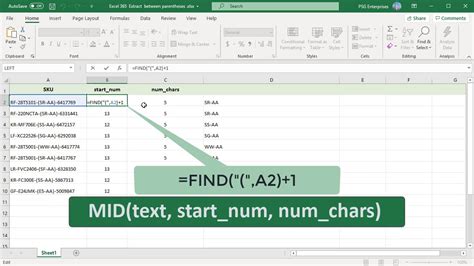
Microsoft Excel is a powerful tool for data analysis and manipulation, offering various functions and formulas to extract and manipulate text data. This guide will walk you through the process of extracting text from a cell in Excel, covering different scenarios and techniques to help you master this essential skill.
Understanding the LEFT, RIGHT, and MID Functions

Excel provides three primary functions for extracting text from a cell: LEFT, RIGHT, and MID. These functions allow you to extract text from the left, right, or middle of a cell's content, respectively.
- The LEFT function extracts a specified number of characters from the left side of a cell's content.
- The RIGHT function extracts a specified number of characters from the right side of a cell's content.
- The MID function extracts a specified number of characters from the middle of a cell's content, starting from a specified position.
Syntax and Usage

The syntax for these functions is as follows:
- LEFT(text, [num_chars])
- RIGHT(text, [num_chars])
- MID(text, start_num, num_chars)
Where:
textis the cell reference or text string from which you want to extract characters.num_charsis the number of characters you want to extract (optional forMIDfunction).start_numis the position from which you want to start extracting characters for theMIDfunction.
Examples

Let's consider an example where you have a list of names in column A, and you want to extract the first name and last name separately.
| Name | First Name | Last Name |
|---|---|---|
| John Doe | John | Doe |
| Jane Smith | Jane | Smith |
| Michael Jones | Michael | Jones |
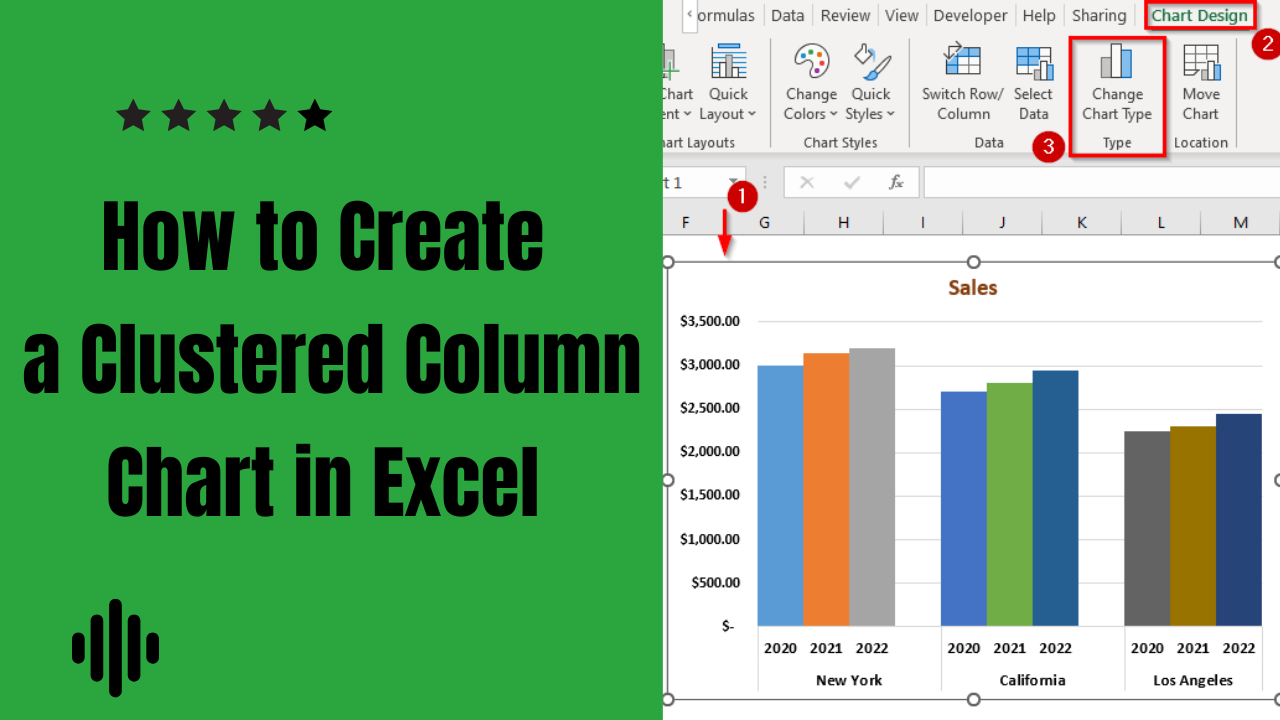
In this case, you can use the LEFT function to extract the first name and the RIGHT function to extract the last name.
- To extract the first name, use the formula:
=LEFT(A2, FIND(" ", A2) - 1)whereA2is the cell containing the full name. - To extract the last name, use the formula:
=RIGHT(A2, LEN(A2) - FIND(" ", A2))whereA2is the cell containing the full name.
Using the FIND and LEN Functions for Text Extraction
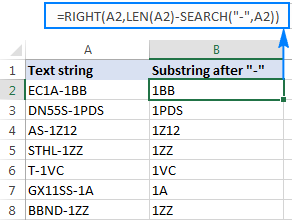
The FIND and LEN functions are powerful tools when used in combination with the LEFT, RIGHT, and MID functions. The FIND function helps you locate the position of a specific character or substring within a cell's content, while the LEN function returns the length of a text string.
Syntax and Usage

The syntax for these functions is as follows:
- FIND(find_text, within_text, [start_num])
- LEN(text)
Where:
find_textis the character or substring you want to find.within_textis the cell reference or text string within which you want to find the character or substring.start_numis the position withinwithin_textfrom which you want to start the search (optional)
Examples
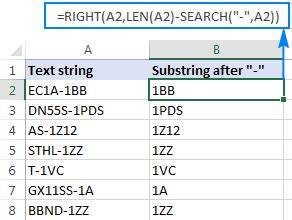
Let's continue with the previous example of extracting first and last names from a list of full names.
To extract the first name, you can use the formula: =LEFT(A2, FIND(" ", A2) - 1) where A2 is the cell containing the full name.
To extract the last name, you can use the formula: =RIGHT(A2, LEN(A2) - FIND(" ", A2)) where A2 is the cell containing the full name.
In both cases, the FIND function helps you locate the position of the space character (" ") within the full name, and the LEN function provides the length of the full name.
Combining Functions for Complex Text Extraction

Sometimes, you may need to perform more complex text extraction tasks, such as extracting text between two specific characters or substrings. In such cases, you can combine the LEFT, RIGHT, MID, FIND, and LEN functions to achieve the desired result.
Example: Extracting Text Between Two Substrings
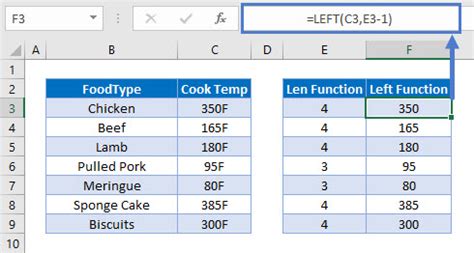
Let's say you have a list of email addresses in column A, and you want to extract the local-part of the email address (the part before the "@" symbol) and the domain name (the part after the "@" symbol) separately.
| Email Address | Local-Part | Domain Name |
|---|---|---|
| john.doe@example.com | john.doe | example.com |
| jane.smith@gmail.com | jane.smith | gmail.com |
| michael.jones@yahoo.com | michael.jones | yahoo.com |
To extract the local-part, you can use the formula: =LEFT(A2, FIND("@", A2) - 1) where A2 is the cell containing the email address.
To extract the domain name, you can use the formula: =RIGHT(A2, LEN(A2) - FIND("@", A2)) where A2 is the cell containing the email address.
Handling Special Cases and Errors

When working with text extraction in Excel, you may encounter special cases or errors. Here are some common scenarios and how to handle them:
Error Handling
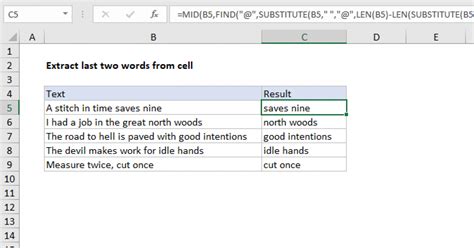
If your formula encounters an error, such as a substring not found or an invalid reference, Excel will display an error message. To handle these errors gracefully, you can use the IFERROR function to provide an alternative result or perform an action when an error occurs.
Example: Handling Substring Not Found

Let's say you are trying to extract the local-part of an email address using the formula: =LEFT(A2, FIND("@", A2) - 1), but some email addresses do not contain the "@" symbol.
In this case, you can use the IFERROR function to provide an alternative result. For example, you can set the formula to return a blank value or a custom message when the "@" symbol is not found.
Example: Handling Invalid References

If your formula references a cell that contains an error or an invalid value, Excel will display an error message. To handle these cases, you can use the IFERROR function to provide an alternative result or perform an action.
Tips and Best Practices

Here are some tips and best practices to consider when extracting text from cells in Excel:
- Always double-check your formulas to ensure they are correct and produce the desired results.
- Use absolute cell references (
$A$2) when referring to cells that contain formulas or values you want to keep constant. - Consider using named ranges to make your formulas more readable and easier to understand.
- Utilize Excel's built-in functions and tools, such as the Text to Columns feature, to simplify complex text extraction tasks.
- Test your formulas with a small sample of data before applying them to a large dataset to ensure accuracy and avoid errors.
Conclusion

Extracting text from cells in Excel is a powerful skill that can greatly enhance your data analysis and manipulation capabilities. By understanding and utilizing the LEFT, RIGHT, MID, FIND, and LEN functions, as well as combining them for complex tasks, you can efficiently extract and manipulate text data in Excel. Remember to handle special cases and errors gracefully, and follow best practices to ensure accurate and reliable results.
Can I extract text from multiple cells at once using these functions?
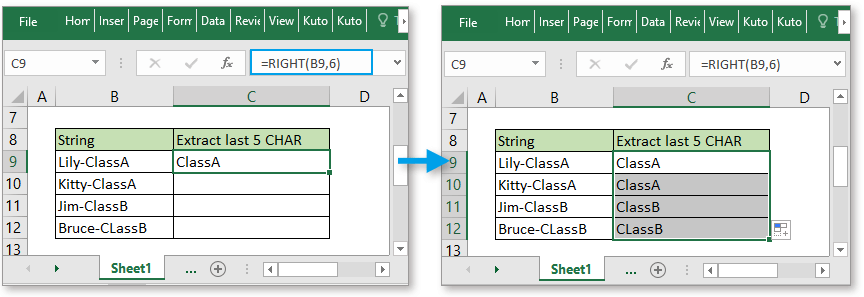
+
Yes, you can apply these functions to a range of cells by using the array formula control key (Ctrl + Shift + Enter) to extract text from multiple cells simultaneously.
What if I want to extract text from a specific position within a cell, not just from the left, right, or middle?

+
In such cases, you can use the MID function, which allows you to specify the starting position and the number of characters to extract.
How can I handle cases where the text I want to extract is not always at the same position within the cell?
+
You can use the FIND function to locate the position of a specific character or substring within the cell, and then use that position to extract the desired text using the LEFT, RIGHT, or MID functions.
Is there a way to extract text based on a pattern or regular expression in Excel?
+
Excel does not have built-in support for regular expressions, but you can use third-party add-ins or VBA code to achieve more advanced text extraction based on patterns or regular expressions.